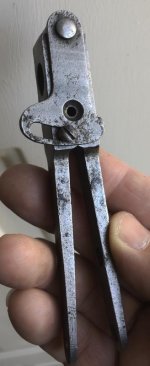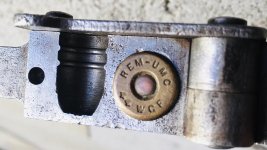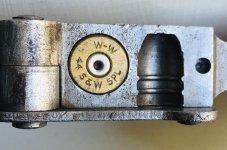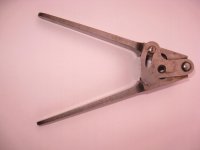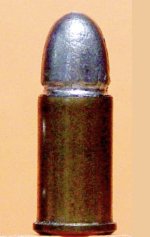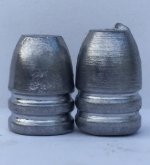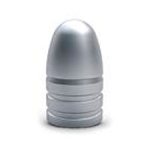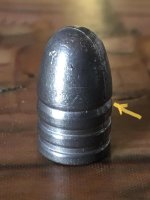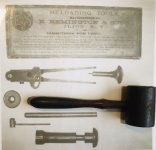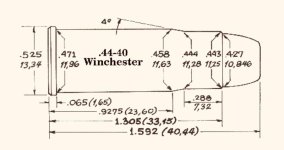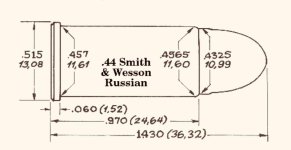I’ve always wanted one of these molds. It’s seen in the N&J book however it is listed only as a 44 cal mold. What bothered me about the mold is the Pre-1887 bullet design? I mean it looks like a 44WCF to me. Especially during that early period. These early molds were replaced with the improved kit in and about 1887 that incorporated the peanut handle double cavity mold.
After examining this mold I’m both astonished and amazed that it actually is a 44 Russian bullet mold. Notice in the photo the 44WCF case head does not fit in the machined primer boss. I tried earlier non head stamped rounds also and they also were too big!However The 44 Russian, special and magnum heads fit perfectly flush. This is required for this type of mold in order to replace the spent primer!
The proof positive is the Actual bullet diameter mic’s at .429 which is correct for the 44 Russian and wrong for the 44 Winchester. (.427)
Anyway, just some rock solid evidence that Smith & Wesson incorporated a flat nosed bullet for the 44 Russian early on as an option for the reloader. To me that’s beyond amazing! Still I wonder why? Did they know the flat nose provided better stopping power?
Murph
After examining this mold I’m both astonished and amazed that it actually is a 44 Russian bullet mold. Notice in the photo the 44WCF case head does not fit in the machined primer boss. I tried earlier non head stamped rounds also and they also were too big!However The 44 Russian, special and magnum heads fit perfectly flush. This is required for this type of mold in order to replace the spent primer!
The proof positive is the Actual bullet diameter mic’s at .429 which is correct for the 44 Russian and wrong for the 44 Winchester. (.427)
Anyway, just some rock solid evidence that Smith & Wesson incorporated a flat nosed bullet for the 44 Russian early on as an option for the reloader. To me that’s beyond amazing! Still I wonder why? Did they know the flat nose provided better stopping power?
Murph
Attachments
Last edited:

